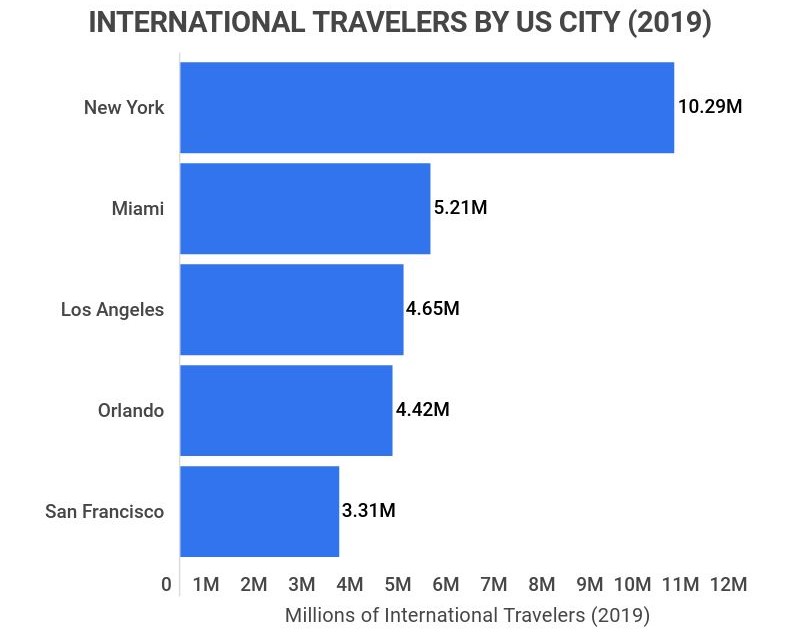- Industry Statistics
- Wedding Industry Statistics
- Yoga Industry Statistics
- Music Industry Statistics
- Landscaping Industry Statistics
- Bicycle Industry Statistics
- Coffee Industry Statistics
- Car Rental Industry Statistics
- Home Improvement Industry Statistics
- Insurance Industry Statistics
- Supplements Industry Statistics
- Golf Industry Statistics
- Fitness Industry Statistics
- US Media And Entertainment Industry Statistics
- Firearm Industry Statistics
- Financial Services Industry Statistics
- Health And Wellness Industry Statistics
- Trucking Industry Statistics
- Wine Industry Statistics
- Pet Industry Statistics
- Mobile App Industry Statistics
- Digital Marketing Industry Statistics
- Hotel Industry Statistics
- Retail Statistics
- Robotics Industry Statistics
- Jewelry Industry Statistics
- Appointment Scheduling statistics
- Restaurant Industry Statistics
- Food Delivery Statistics
- Food Truck Industry
- Fashion Industry
- Real Estate Industry
- US Film Industry
- US Beverage Industry
- USu202fFast Food Restaurants
- US Construction Industry
- US Book Industry
- Cosmetics Industry
- US Food Retail Industry
- US Pharmaceutical Industry
- US Healthcare Industry
- Oil And Gas Industry Statistics
- Airline Industry
- Nursing Shortage Statistics
- Automobile Industry
- Nursing Home Statistics
Research Summary. The airline industry is one of the biggest in the US but has seen massive fluctuations as of late. The coronavirus hit the US airline industry hard, causing their revenue to drop significantly. Only now is it starting to recover. After extensive research, our data analysis team concluded:
-
There were 369 million US airline passengers in 2020.
-
US airlines generated $130.85 billion in revenue in 2020.
-
The number of passengers flying in 2020 dropped by 557 million passengers from 2019-2020, a 40% decline.
-
The US aviation industry currently employs 1,290,400 total employees, comprised of 691,700 pilots and 598,700 other employees.
-
The US aviation industry accounts fro 5.2% to the America’s total GDP, as of 2020.
-
US commercial air travel contributes between 3-4% of the country’s total greenhouse gas emissions. Overall, the U.S. aviation industry accounts for 202.5 million tons of CO2 emissions, 23.5% of the world’s total.
For further analysis, we broke down the data in the following ways:
Passenger Flights | Company | Trends + Projections | Environmental Impact | Cargo Airlines

US Airline Industry Annual Revenue 2010-2020
| Year | Revenue |
|---|---|
| 2020 | $130.85 billion |
| 2019 | $248 billion |
| 2018 | $240 billion |
| 2017 | $222.24 billion |
| 2016 | $209.3 billion |
| 2015 | $205.36 billion |
| 2014 | $207.71 billion |
| 2013 | $200.24 billion |
| 2012 | $196.11 billion |
| 2011 | $193.04 billion |
| 2010 | $174.68 billion |
General Airline Statistics
Despite how the COVID-19 pandemic has impacted the US airline industry, it continues to play a vital role in travel. For instance, US airlines had 303.7 billion revenue passenger miles on domestic flights in 2020. Here are some other interesting facts:
-
As of May 2021, the number of passengers on commercial flights since May 2020 has increased by 607%.
In May of 2020, there were only 8 million passengers on US commercial flights. By contrast, there were 56.6 million passengers in May 2021. The biggest increase here can be seen in international flights, which have had an astonishing 2,522% increase since 2020.
-
39% of planes sat idle in 2020, but that number is down to 24% as of May 2021.
When the pandemic hit, many planes were put out of use to save costs. Many even retired early, like the A380. This plane has only seen less than ten years of activity. However, things are starting to pick up, as the current number of planes has increased from 61% to 76%.
-
In 2020, the US had 303.7 billion revenue passenger miles (RPM) on domestic flights.
This might seem like a lot, but it was actually down significantly from 2019. In 2019, RPM was up to 752.75 billion, which shows a decrease of 40% from 2019-2020.
-
The United States, China, and Ireland are the biggest fliers in the world.
The US holds the #1 spot for air travel, with over 926.7 million passengers boarding US-registered planes in 2019. In second place was China, with 660 million. And somewhat surprisingly, Ireland held the 3rd place title with 170 million passengers.
-
The global airline industry’s market size is estimated to be $471.82 billion in 2021.
That’s about 42.4% lower than 2019, when the global airline industry was valued at over $818 billion. Still, it respresnts a 31.3% increase from 2020 numbers, so there’s space for optimism.

Passenger Airline Statistics
Where do US passengers like to go? The most popular foreign destination is Mexico, with roughly 39.3 million US residents traveling there over the course of a year. But, of course, domestic travel is also popular in the US, given how big the country is. Here are the insights our research has uncovered:
-
Mexico and Canada receive the highest volume of US travelers.
With Mexico receiving 39.3 million US air travelers, and Canada receiving 15 million, these two foreign destinations make up the highest volume of international US air travel.
-
US flights to Barbados increased by 482% in 2019.
Barbados has seen a massive increase in the amount of US air travel headed their way. Other increasingly popular international destinations include Iceland (191% increase), Morocco (191% increase), and Portugal (175% increase)
-
New York City receives 50 million domestic and foreign visitors every year.
With 50 million visitors every year, New York City, New York, and Times Square are the most visited travel destination in the United States. Other popular US destinations include Las Vegas, New Orleans, and San Francisco.
-
281,000 US flights were canceled in 2020.
This is compared to the 135,000 canceled in 2019, which indicates an increased cancellation rate of 48%. Plus, During the peak of the COVID-19 Pandemic in May 2020, 6.4% of all US flights were canceled.

America’s Most Visited Cities
| City | International Tourists (2019) |
|---|---|
| New York | 10.29 million |
| Miami | 5.21 million |
| Los Angeles | 4.65 million |
| Orlando | 4.42 million |
| San Francisco | 3.31 million |
Airline Company and Airport Statistics
The United States is a big country, so there are bound to be airports and airline companies that are more popular than others. What are they? Well, here’s what we found:
-
Southwest is the most popular airline company, favored by 48% of Americans.
Despite being more expensive than the competition, Southwest is still the favorite due to its customer-friendly policies. For example, Southwest doesn’t charge change fees for ticket changes like other airline companies. However, Southwest’s cheaper competitor, Delta Airlines, is still favored by 46% of Americans.
-
As of 2020, American Airlines is the largest airline company in the US.
This company holds an impressive 19.3% of the total market share. However, Southwest is close behind with 17.4% of the market share.
-
Atlanta International Airport (ATL) is the busiest airport in the United States.
This airport, located in Atlanta, Georgia, transported 20.7 million passengers in 2020. The second and third busiest airports in the US are DFW in Dallas, Texas, and DEN in Denver, Colorado.

US Airlines by Domestic Market Share (2020)
| Airline | Domestic Market Share |
|---|---|
| American | 19.30% |
| Southwest | 17.40% |
| Delta | 15.50% |
| United | 12.40% |
| Spirit | 5.80% |
| Alaska | 5.30% |
| JetBlue | 4.70% |
| Frontier | 3.60% |
| SkyWest | 3.50% |
| Envoy Air | 1.30% |
| Other | 11.20% |
Airline Industry Trends and Predictions

So far, we’ve seen the US airline industry go from boom to bust and now seemingly back to boom again. Of course, future trends and predictions can be hard to estimate, but here’s what the experts say:
-
Airlines are not predicted to recover to 2019 levels of passenger demand until 2023.
Experts suspect that recovering the 40% passenger loss from 2019-2020 will take at least 4-5 years, meaning that airline companies won’t fully recover until 2023 at the earliest.
-
Airlines suffered a $391 billion in revenue shortfall in 2020.
This ultimately resulted in airlines losing $118 billion in net profits. This resulted in airline companies requiring a significant amount of government subsidies to keep afloat.
-
There were 369 million US airline passengers in 2020.
The number of passengers flying in 2020 dropped by -557 million passengers from 2019-2020, a 40% decline.
-
Passenger demand for international air travel was down -75.6% from 2019-2020.
Passenger demand for air travel reached an all-time low in 2020, with international travel being hit the hardest. However, domestic travel was also impacted, as demand for that also dropped by -48.8%.
Airline Industry and Environment Statistics
As mentioned in the general statistics section, the airline industry has a huge impact on the environment. US commercial air travel alone contributes between 3-4% percent of the country’s total greenhouse gas emissions. Here are more facts:
-
The price of jet fuel dropped by 36% in 2020.
From April 2019 to April 2020, the price of jet fuel dropped from $1.98 per gallon to $0.63 per gallon. However, as of 2021, the price is beginning to rise again. As of June 2021, it’s back up to $1.86 per gallon.
-
The use of jet fuel in 2020 dropped by 26%.
Due to fewer flights and passengers, the need for jet fuel decreased in 2020. Overall demand fell by roughly 2.1 mb/d.
-
Airline carbon emissions fell by 48% in 2020.
Typically, the US airline industry has accounted for 202.5 million tons of CO2 emissions in the past. However, the industry’s average carbon emissions fell by a massive 48% due to the effects of the COVID-19 pandemic.
-
Long haul flights produce approximately 90 kg CO2 per hour.
Therefore, if you were to fly from California to Japan, and your flight took 11 hours, your plane would burn 990 kg of CO2. And that’s only one flight.
Cargo Airline Statistics
Carrying cargo all over the world is one of the most important airline industry tasks. Despite a decline in commercial flights due to COVID-19, the amount of cargo carried on planes has actually seen a substantial increase. Overall, domestic airlines carried 17% more cargo from December 2019 to December 2020. Our research also showed the following:
-
1,854,000 tons of cargo were carried by US planes in 2020.
That number is a combination of domestic and international cargo. Domestically, 1,420,000 tons were carried, and internationally, 434,000 tons were carried. Together they make up a 17% increase in the amount of cargo carried by US aircraft.
-
Global air cargo capacity has been down -12% from 2019-2020.
However, the US has been doing surprisingly well compared to other countries in this regard. While US to Europe cargo capacity had dropped by -33%, US cargo capacity to other countries actually rose. Cargo capacity to South America increased by 12%, and to Asia by 8%.
-
FedEx Express is the largest US cargo airline, laying claim to 36.4% of the market share.
That’s equivalent to 6.7 million tons of cargo. The runner-up for this position is UPS Airlines, which accounts for 24.8% of the market share.
Airline Industry FAQ
-
Many people have started opening up to the idea of traveling in 2021. However, there are a few things you should keep in mind. First, while many airline companies have implemented safety measures, such as mandatory face masks, daily cleanings, PPE for flight crew, and changes to food service, not all airlines are the same.
Additionally, many countries are still requiring mandatory two-week quarantines for Americans. When in doubt, we recommend researching your travel destination before planning a flight.
-
Why are flights getting expensive?
Flights were insanely cheap in 2020 because no one was flying! Now that demand and the price of jet fuel are rising once again, the cost of flights must rise as well. However, this trend should become more stable by 2023.
-
Is flying harmful to the environment?
Given that commercial aviation alone was responsible for 3-4% of the US’ total greenhouse emissions, it’s unfortunate to admit that flying is harmful to the environment. Going forward, many countries are looking into using sustainable aviation fuels made from plants, algae, cooking oil, and even municipal waste.
-
How much did the airline industry make in 2020?
The airline industry in the US made $130.85 billion in 2020. That represents a sharp 47.2% drop in revenue from 2019, when US airlines generated $248 billion in revenue. Experts estimate that a return to pre-pandemic levels of air travel and revenue isn’t expected until 2023.
-
How big is the airline industry?
The global airline industry’s market size is estimated to be just over $470 billion. That’s about 42.4% lower than 2019, when the global airline industry was valued at over $818 billion.
-
What percentage of the US economy is the airline industry?
5.2% of the US economy is the airline industry, as measured by gross domestic product (GDP). US aviation also employs 1,290,400 total employees and generates over $1 trillion in total economic activity each year.
-
Who dominates the airline industry?
No company dominates the airline industry, but the current US leader is American Airlines, with 19.3% domestic market share. Southwest and Delta are second and third, at 17.4% and 15.5% respectively.
Conclusion
While the COVID-19 Pandemic had a devastating impact on the US airline industry, causing them to lose $118 billion in revenue and 40% of their passengers, things are starting to improve. From 2020-2021, airline industries have seen significant increases in their prospects, with passengers rising by a whopping 607%.
Though it will continue to take time for the industry to recover, we can all rest assured that there is a future for the airline industry.
References
-
Statista. “Total operating revenue streams of U.S. airlines from 2004 to 2020.” Accessed on August 15, 2021.
-
BTS. “Full Year 2020 and December 2020 U.S. Airline Traffic Data.” Accessed on August 15, 2021.
-
Statista. “Employment in the U.S. aviation industry – statistics facts.” Accessed on August 15, 2021.
-
FAA. “The Economic Impact Report of Civil Aviation on the U.S. Economy January 2020.” Accessed on August 15, 2021.
-
EESI. “Fact Sheet | The Growth in Greenhouse Gas Emissions from Commercial Aviation.” Accessed on August 15, 2021.
-
The New York Times. “A Big Climate Problem With Few Easy Solutions: Planes.” Accessed on August 16, 2021.
-
BTS. “U.S. Airlines May 2021 Passengers Increased 607% from May 2020 but Declined 30% from May 2019 (Preliminary).” Accessed on August 16, 2021.
-
HalldaleGroup. “Parked Airplanes, Idle Simulators.” Accessed on August 16, 2021.
-
U.S. Department of Transportation. “Air Travel Consumer Report: May 2021 Numbers.” Accessed on August 16, 2021.
-
Statista. “Domestic revenue passenger miles of U.S. airlines from 2004 to 2020 (in billions)*.” Accessed on August 16, 2021.
-
Statista. “Number of passengers on airlines worldwide in 2019, by registration country.” Accessed on August 16, 2021.
-
Statista. “The Most Popular Destinations for U.S. Travelers Abroad.” Accessed on August 16, 2021.
-
MapQuest Travel. “Top Tourist Cities In The USA.” Accessed on August 16, 2021.
-
BTS. “Air Travel Consumer Report: June 2020 and 2nd Quarter 2020 Numbers.” Accessed on August 16, 2021.
-
Statista. “Number of cancellations by major U.S. air carriers from 2000 to 2020.” Accessed on August 16, 2021.
-
BTS. “U.S. Airlines Carried 17% More Cargo in December 2020 than in December 2019.” Accessed on August 16, 2021.
-
Now Next. “COVID-19: Impact on air cargo capacity.” Accessed on August 16, 2021.
-
Aeroweb. “Top 100 U.S. Airlines in 2019.” Accessed on August 16, 2021.
-
YouGovAmerica. “The Most Popular Airlines (Q2 2021).” Accessed on August 16, 2021.
-
Statista. “Domestic market share of leading U.S. airlines from January to December 2020*.” Accessed on August 16, 2021.
-
Statista. “Busiest U.S. airports in 2020, based on the number of passengers enplaned.” Accessed on August 16, 2021.
-
Insider. “The airline industry will be ravaged for years to come, and the effects will be felt across the entire economy, a new Moody’s report says.” Accessed on August 17, 2021.
-
FreightWaves. “Airlines Absorb $391 Billion Revenue in Shortfall 2020.” Accessed on August 17, 2021.
-
Airlines. “‘Catastrophic’ year for air travel demand.” Accessed on August 17, 2021.
-
Index Mundi. “Jet Fuel Daily Price.” Accessed on August 17, 2021.
-
IEA. “Oil – Global Energy Review – Analysis.” Accessed on August 17, 2021.
-
Carbon Independent. “Aviation.” Accessed on August 17, 2021.
-
Statista. “Market size of the airline industry worldwide from 2018 to 2021.” Accessed on December 23, 2021.
-
WorldAtlas. “America’s 10 Most Visited Cities.” Accessed on December 23, 2021.
- Industry Statistics
- Wedding Industry Statistics
- Yoga Industry Statistics
- Music Industry Statistics
- Landscaping Industry Statistics
- Bicycle Industry Statistics
- Coffee Industry Statistics
- Car Rental Industry Statistics
- Home Improvement Industry Statistics
- Insurance Industry Statistics
- Supplements Industry Statistics
- Golf Industry Statistics
- Fitness Industry Statistics
- US Media And Entertainment Industry Statistics
- Firearm Industry Statistics
- Financial Services Industry Statistics
- Health And Wellness Industry Statistics
- Trucking Industry Statistics
- Wine Industry Statistics
- Pet Industry Statistics
- Mobile App Industry Statistics
- Digital Marketing Industry Statistics
- Hotel Industry Statistics
- Retail Statistics
- Robotics Industry Statistics
- Jewelry Industry Statistics
- Appointment Scheduling statistics
- Restaurant Industry Statistics
- Food Delivery Statistics
- Food Truck Industry
- Fashion Industry
- Real Estate Industry
- US Film Industry
- US Beverage Industry
- USu202fFast Food Restaurants
- US Construction Industry
- US Book Industry
- Cosmetics Industry
- US Food Retail Industry
- US Pharmaceutical Industry
- US Healthcare Industry
- Oil And Gas Industry Statistics
- Airline Industry
- Nursing Shortage Statistics
- Automobile Industry
- Nursing Home Statistics





